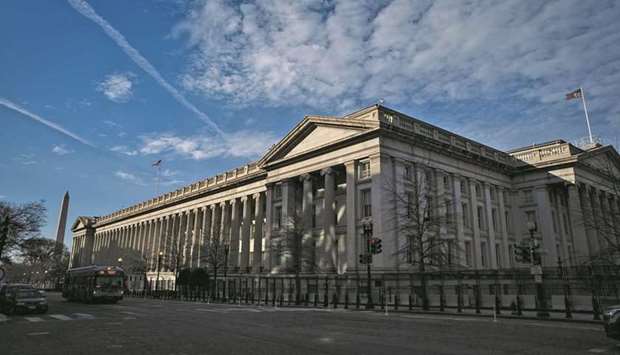As the prospect of interest-rate hikes whipsaws bond markets, bears can be forgiven for betting the recent 10-year Treasury selloff will resume in earnest given the inflationary pressures building everywhere.
But with a key section of the US yield curve inverting on growth fears, the likes of AXA Investment Managers to HSBC Holdings Plc can find a receptive audience to make a case that the 40-year bull market is alive and well.
From their perspective, everything from muted real-income growth, the temporary nature of the supply-chain crisis and relentless demand from dedicated long-only buyers suggest 10-year yields have peaked for this year.
“Everyone in the market seems to think inflation is running away and the Federal Reserve is going to act aggressively to bring it down. That’s not our view,” said Michael Brown, principal economist at Visa Inc. “There was a significant downshift in consumption in the third quarter, and a big part of that is coming from the service side of the economy.”
The recent path of yields would seem to support those who are constructive on intermediate- to longer-dated debt. After topping 1.70% as recently as last week, the US 10-year Treasury yield is around 1.60% in Friday trading.
Price pressures spurred by the supply-chain snafus and bets that the Federal Reserve will hike rates earlier than expected have been driving volatile moves across the Treasury curve with front-end yields breaking out.
Brown sees the 10-year yield ending the year at 1.60%. The Wall Street consensus is 1.68%, rising to 1.90% by mid-2022 as the derivatives market prices in Fed policy tightening next year.
Several factors suggest the market is overstating the inflation risk. Rising prices are being driven more by supply bottlenecks than a surge in demand. And that’s a problem that interest-rate increases won’t solve. As for wage growth, workers risk pay cuts as inflation outstrips their raises – which could sap consumer spending.
“Ultimately, if inflation is up and wages up less, workers have gotten a pay cut,” said Larry Dyer, a strategist at HSBC in New York who says long-run employee compensation has fallen from an 80-year average of 63% of gross profits to 57.5% over the past two decades. “This is a sign of weaker worker bargaining power than in the past. It’s likely that any change in this relationship will take time to reverse.”
For Dyer, two forces driving inflation – supply disruptions and so-called base effects – will dissipate in time. Irrespective of whether it takes six months or more than a year, bottlenecks should be ease as supply increases. HSBC forecasts the 10-year yield will fall to 1.50% by year-end and 1% by the close of 2022.
Concerns about inflation and rising interest rates have led investors to dump bonds this year. The latest Bank of America Corp monthly fund manager survey showed they’re the most underweight in their bond allocation ever.
The rationale for such bearishness rests partly on the argument that, as worker purchasing power increases, it will force companies to pass on higher costs to consumers. But September data showed real average hourly earnings remain under pressure as income growth was offset by higher prices for goods and services.
Meanwhile, for Nick Hayes, a fund manager at AXA Investment Managers in London, a shift in sentiment could lead to a spirited decline in yields.
Such a turnaround would draw strength from institutions such as pension funds and insurers, which invest in sovereign bonds for regulatory and balance-sheet reasons. Global pension funds hold more than $30tn in assets, according to data from the Organisation for Economic Co-operation and Development.
“Theoretically, bond yields should be higher but, for positive technical reasons we believe will persist, they are not,” Hayes said. “We know duration is expensive but as investors, you just can’t rule out government bonds.”
The 40-year bond bull market is “far from over.”

The US Treasury building in Washington, DC. As the prospect of interest-rate hikes whipsaws bond markets, bears can be forgiven for betting the recent 10-year Treasury selloff will resume in earnest given the inflationary pressures building everywhere.


